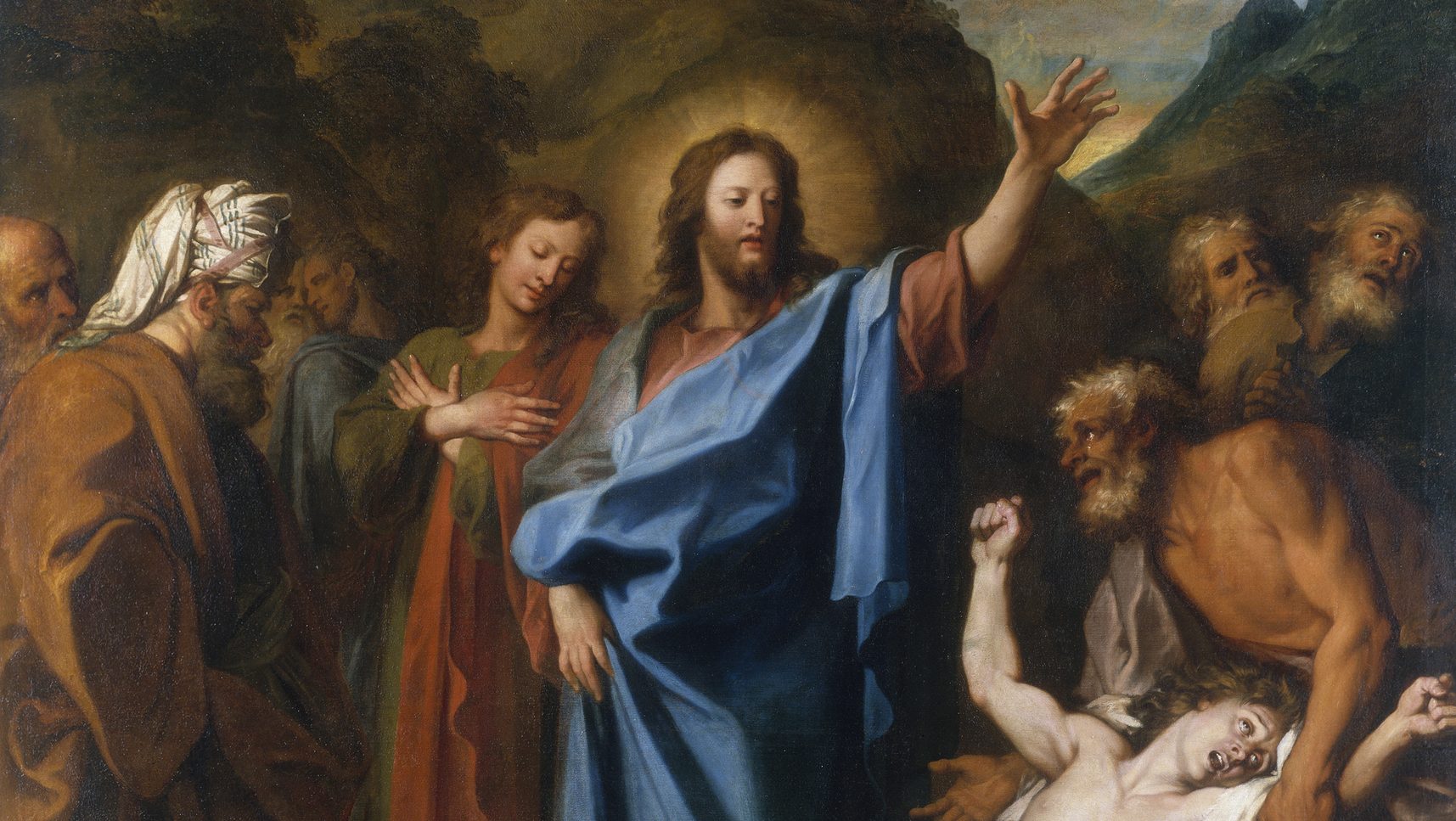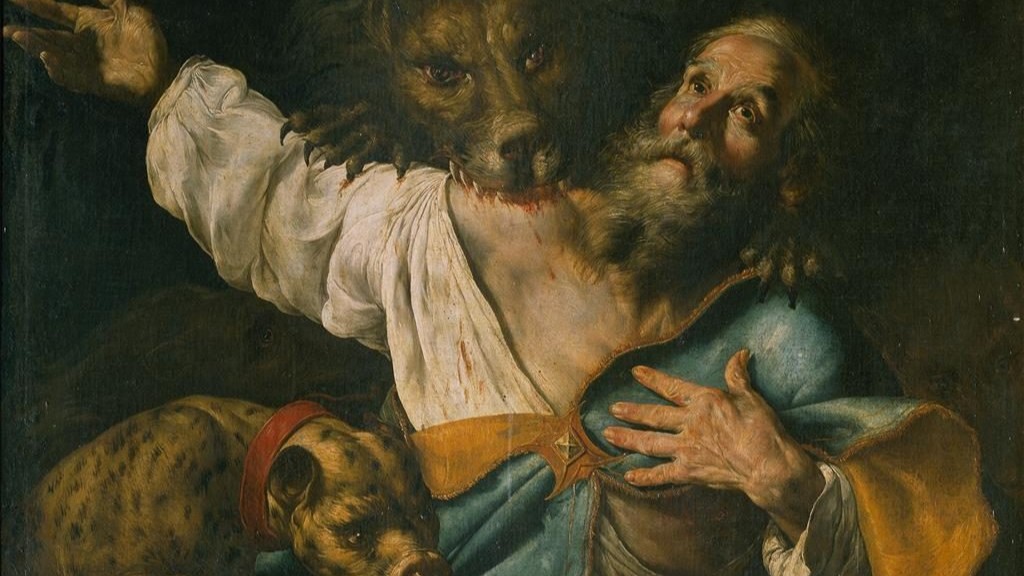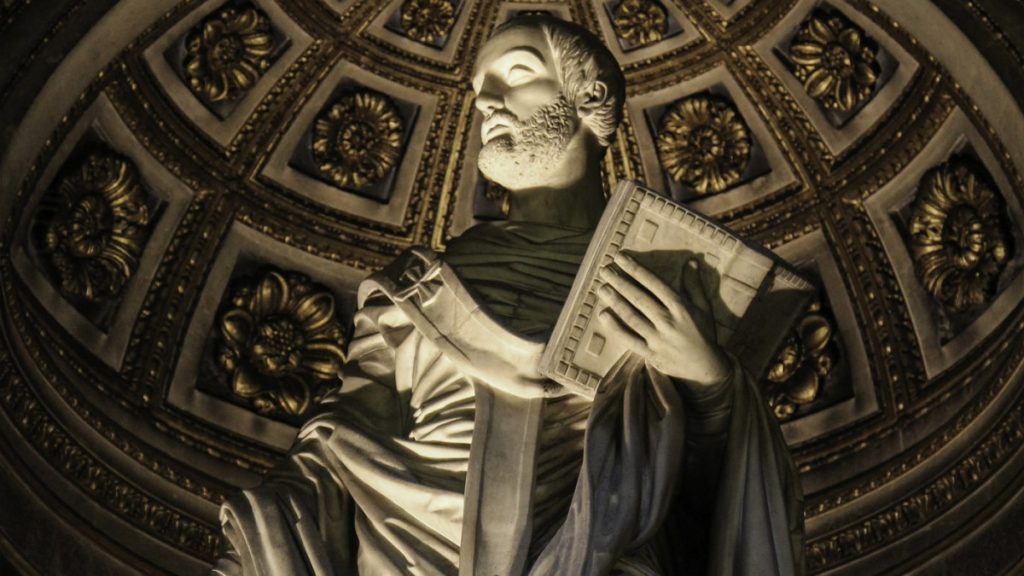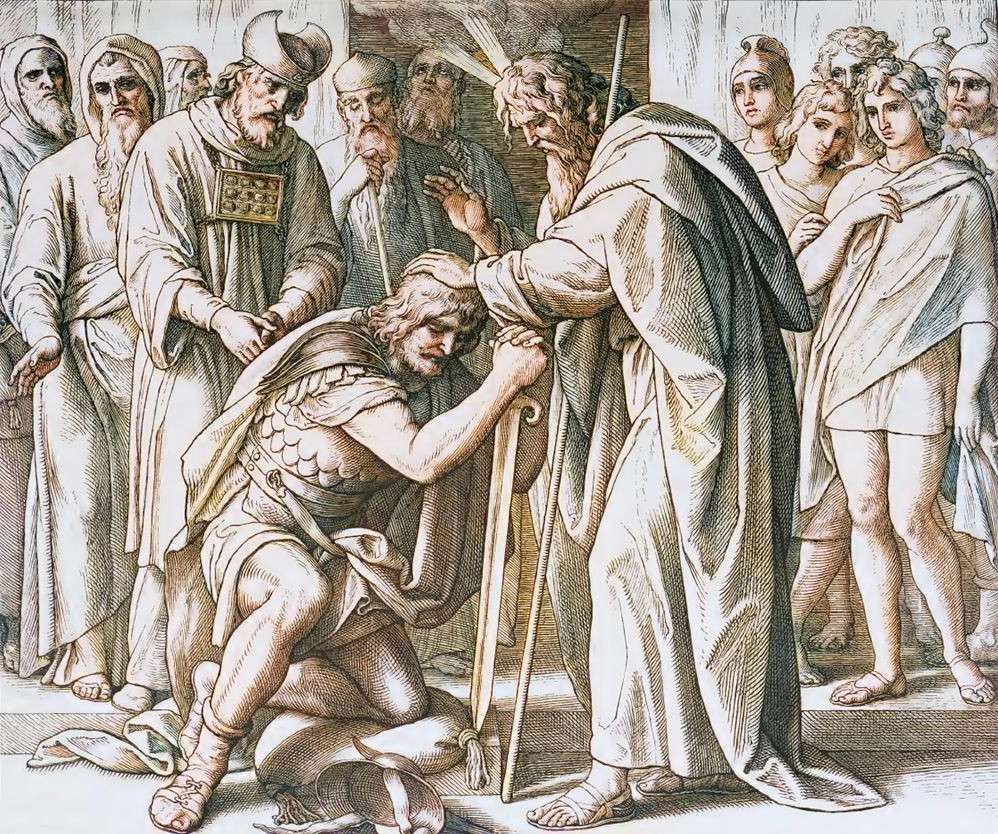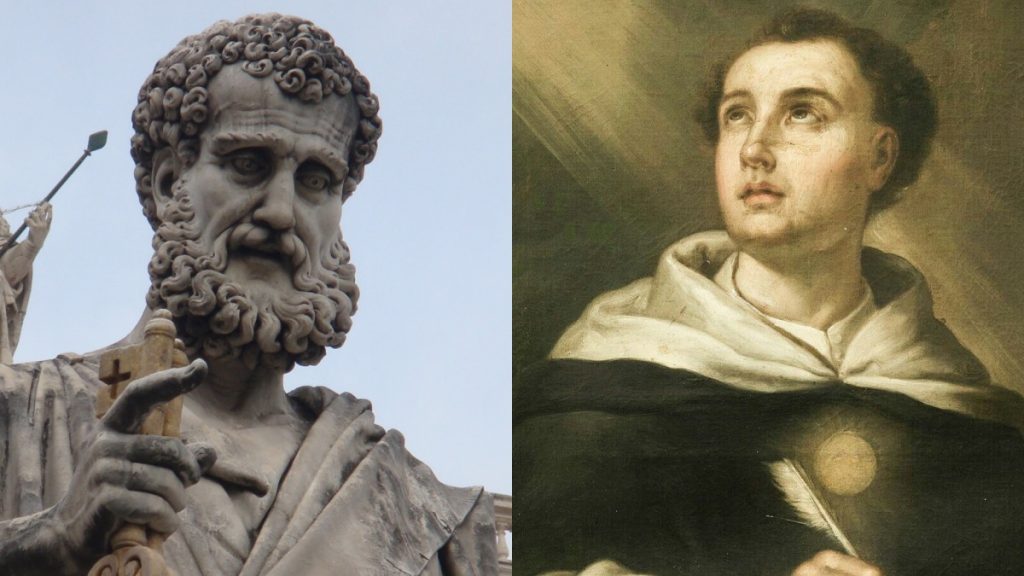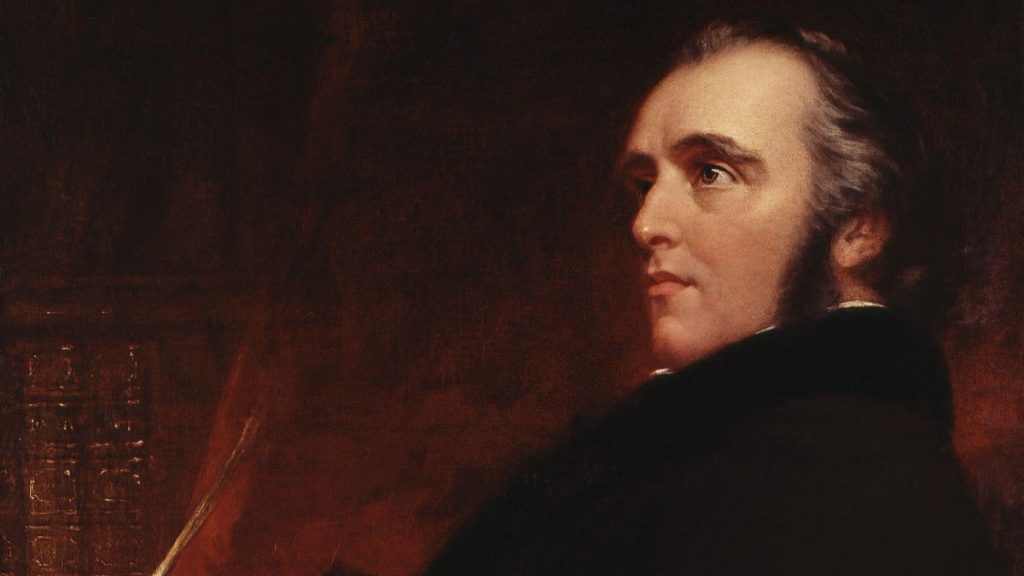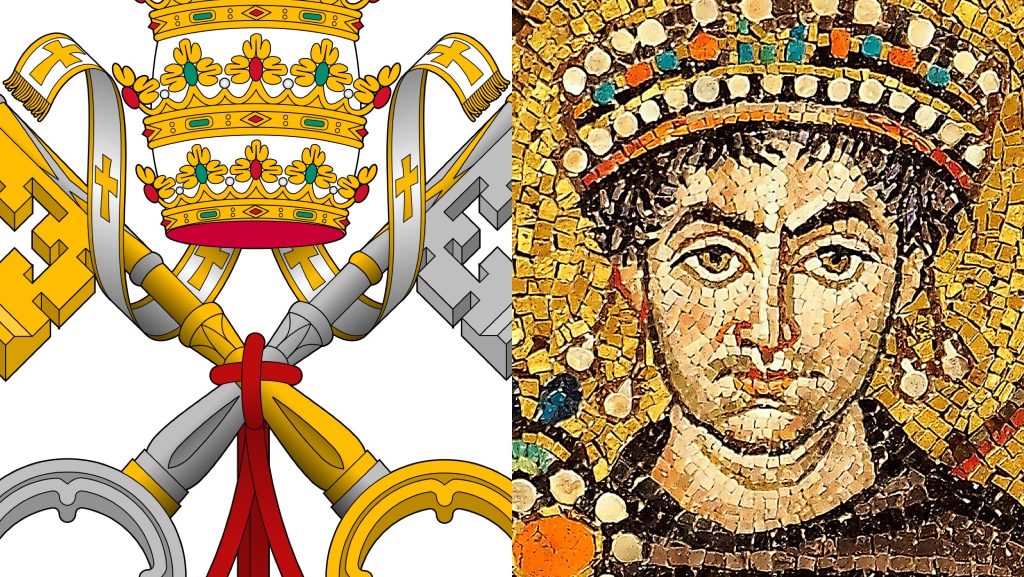Relevant Resources
Introduction
This is the first installment of a series we are calling “Angels and Demons, Signs and Wonders.” Each of these will highlight stories about miraculous and/or preternatural events that occurred in Church history, especially the age of the Church Fathers (roughly the first thousand years).
The goal is to share stories that illustrate how God, the Saints, and our spiritual enemies (i.e. Satan and his demons) have been active throughout Church history in ways that provide powerful evidence for the Catholic Faith.
Roadmap
This first installment will cover what I call “St. Augustine’s Hall of Miracles,” which are a series of 24 miracle stories he records in his magisterial work, City of God (Book 22, Ch. 8). He witnessed some of these events himself, and others he heard about from firsthand witnesses.
We’ll cover all 24 miracle accounts in two parts. This first part will cover the first 10.
Our Roadmap is as follows:
- Our thesis is that these accounts not only show that miracles have been a normal part of Catholic life since ancient times, but they also provide powerful evidence that the Catholic Faith is true. Prior to sharing these accounts, St. Augustine himself identifies three very Catholic sources for most of the miracles he reports: the sacraments, the relics of the Saints, and the prayers of the Saints. As we’ll see, he attributes some of these miracles to the authority of the priesthood (and thus the sacrament of Holy Orders), as well as various sacramentals (objects and practices to which the public prayer of the Church is attached), such as the sign of the cross, holy oil, etc. We’ll back up this thesis by:
- Sharing St. Augustine’s stories; then
- Summarizing the conclusions we believe these miracle accounts allow us to reach.
Augustine Addresses Pagan Objections About Lack of Miracles
Augustine begins walking down the “Hall of Miracles” by addressing the objection made by some pagans that miracles no longer occur:
“Why,” they say, “are those miracles, which you affirm were worked formerly, worked no longer?”
I might, indeed, reply that miracles were necessary before the world believed, in order that it might believe. And whoever nowadays demands to see prodigies that he may believe, is himself a great prodigy, because he does not believe, though the whole world does.
But they make these objections for the sole purpose of insinuating that even those former miracles were never worked. How, then, is it that everywhere Christ is celebrated with such firm belief in His resurrection and ascension? How is it that in enlightened times, in which every impossibility is rejected, the world has, without any miracles, believed things marvelously incredible? Or will they say that these things were credible, and therefore were credited? Why then do they themselves [the pagan objectors] not believe?
Our argument, therefore, is a summary one: either incredible things which were not witnessed have caused the world to believe other incredible things which both occurred and were witnessed; or this matter was so credible that it needed no miracles in proof of it, and therefore convicts these unbelievers of unpardonable skepticism. This I might say for the sake of refuting these most frivolous objectors.
But we cannot deny that many miracles were worked to confirm that one grand and health-giving miracle of Christ’s ascension to heaven with the flesh in which He rose. For these most trustworthy books of ours [Scripture] contain in one narrative both the miracles that were worked and the creed which they were worked to confirm. The miracles were published that they might produce faith, and the faith which they produced brought them into greater prominence. For they are read in congregations that they may be believed, and yet they would not be so read unless they were believed.
Augustine then goes on to assert that such miracles have continued among Christians, and identifies three very Catholic sources for them: the sacraments, the relics of Saints, and the prayers of the Saints. He explained as follows:
For even now miracles are worked in the name of Christ, whether by His sacraments or by the prayers or relics of His saints; but they are not so brilliant and conspicuous as to cause them to be published with such glory as accompanied the former miracles. For the canon of the sacred writings, which behooved to be closed [or “published”], causes those to be everywhere recited, and to sink into the memory of all the congregations.
But these modern miracles are scarcely known even to the whole population in the midst of which they are worked, and at the best are confined to one spot. For frequently they are known only to a very few persons, while all the rest are ignorant of them, especially if the state is a large one; and when they are reported to other persons in other localities, there is no sufficient authority to give them prompt and unwavering credence, although they are reported to the faithful by the faithful.
It is with this in mind—that miracle accounts are often not immediately recorded or published outside of local areas—that Augustine sets out to share some of them in order to refute pagan objections.
Miracle #1—Relics of the Martyrs Cause a Blind Man to Receive His Sight in Milan
The first miracle reported by Augustine took place in Milan, Italy, in which a blind man had his sight restored by the recently-discovered relics of two martyrs—Protasius and Gervasius—who were murdered during a 2nd century persecution:
The miracle which was worked at Milan when I was there, and by which a blind man was restored to sight, could come to the knowledge of many; for not only is the city a large one, but also the emperor was there at the time, and the occurrence was witnessed by an immense concourse of people that had gathered to the bodies of the martyrs Protasius and Gervasius, which had long laid concealed and unknown, but were now made known to the bishop Ambrose in a dream, and discovered by him. By virtue of these remains the darkness of that blind man was scattered, and he saw the light of day.
Augustine not only ascribes the miracle itself to the relics of Saints Protasius and Gervasius, but informs us that St. Ambrose—the bishop of Milan who helped Augustine become Catholic, and baptized him—discovered the relics by a private revelation from God in a dream.
A quick side note: I was blessed to be able to visit the very baptistry in which Ambrose baptized Augustine in the summer of 2024 (see picture below).
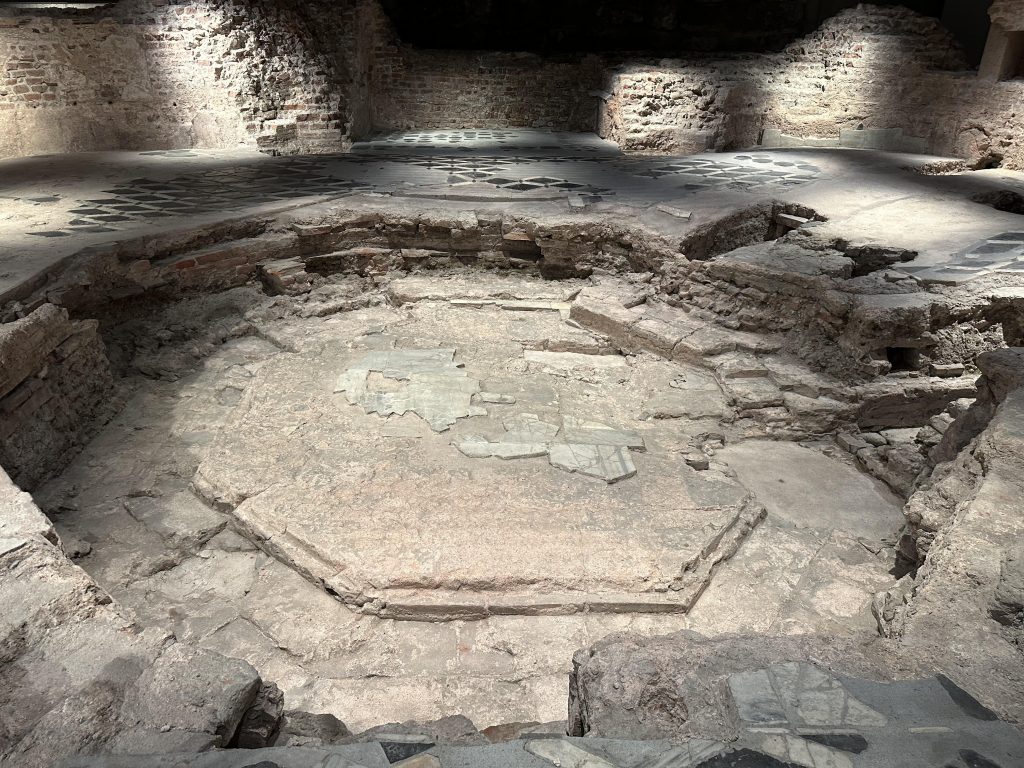
Augustine relays a more complete account of this miracle in his Confessions (Book 9, Ch. 7, §16), observing that the remains of the martyrs were apparently incorrupt (meaning, they had not rotted), which continues to take place in the Catholic Church to this day:
Then did You [God] by a vision make known to your renowned bishop [St. Ambrose of Milan] the spot where lay the bodies of Gervasius and Protasius, the martyrs (whom You had in Your secret storehouse preserved uncorrupted for so many years), from which You might at the fitting time produce them to repress the feminine but royal fury [referring to the heretic Justina, the mother of the boy emperor Valentinian, who had persecuted St. Ambrose]. For when they were revealed and dug up and with due honor transferred to the Ambrosian Basilica, not only they who were troubled with unclean spirits (the devils confessing themselves) were healed, but a certain man also, who had been blind many years, a well-known citizen of that city, having asked and been told the reason of the people’s tumultuous joy, rushed forth, asking his guide to lead him there. Arrived there, he begged to be permitted to touch with his handkerchief the bier of Your saints, whose death is precious in Your sight [Ps. 116:15]. When he had done this, and put it to his eyes, they were immediately opened. From there did the fame spread; from there did Thy praises burn—shine; from there was the mind of that enemy [Justina, an empress who mistreated Ambrose], though not yet enlarged to the wholeness of believing, restrained from the fury of persecuting.
In his Sermon 286 (§4),1 delivered in 428, Augustine informs us that the blind man whose sight was restored pledged to serve in the basilica in which the martyrs’ relics were contained for the rest of his life:
So today, brothers and sisters, we are celebrating the memorial set up in this place in honor of Saints Protasius and Gervasius, the martyrs of Milan. Not the day when it was set up here, but the day we are celebrating today is the day of the discovery of the death of his saints, precious in the sight of the Lord [Ps. 116:15], by bishop Ambrose, that man of God. Of that glorious occasion for the martyrs I was myself also a witness. I was in Milan, I know about the miracles that occurred, when God bore witness to the precious deaths of his saints, so that by means of those miracles that death might be precious not only in the sight of the Lord, but also in the sight of men.
A blind man, well known to the whole city, had his sight restored; he ran, he had himself led to the spot, he went home without a guide. I haven’t heard that he died; perhaps he’s still alive. He vowed that he was going to serve all the rest of his life in that basilica of theirs, where their bodies are. We all rejoiced at his being able to see, we left him there at his service.
Ambrose likewise mentions the miraculous effects of saintly relics to his sister, Marcellina, no doubt with the relics of Protasius and Gervasius in mind (Letter 61)2:
With good reason do people call this the resurrection of the martyrs. But I will see whether the martyrs arose for their advantage or for ours. You know, and, in fact, have seen many persons cleansed of the evil spirits. And many who touched the clothing of the saints with their hands were rid of sicknesses which troubled them. Miracles from times past are beginning anew as when at the coming of the Lord Jesus great grace poured itself upon the earth. You have seen how many have been healed by the mere shadow of the bodies of the saints. How many handkerchiefs have been passed out! How many garments which were laid upon the sacred relics are now said to possess healing power in their very touch! Everyone is glad to touch the outer cloth and touching it he will be cured.
Thanks be to you, O Lord Jesus, for having aroused the spirit of the martyrs at this time when Your Church needs greater protection.
This amazing account is just the tip of the iceberg when it comes to illustrating a phenomenon that was very common in the ancient Church: miracles brought about by the relics of the Saints, especially martyrs. In fact, I was blessed to lay eyes on these exact same relics myself when I visited Milan in the summer of 2024 (see picture below). They are housed at the Basilica of Sant’Ambrogio, placed on either side of the relics of the great St. Ambrose himself, who discovered them.
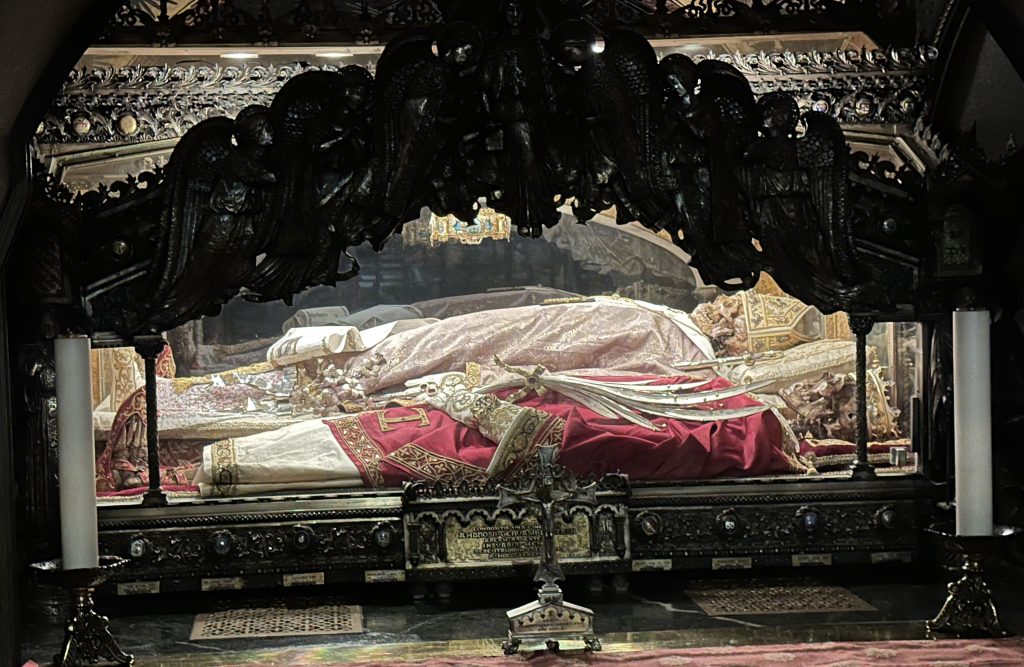
Miracle #2—The Curing of Innocentius’s Fistula
The next account in Augustine’s “Hall of Miracles” involved the curing of a public official, Innocentius, which took place before his own eyes. In this case, Innocentius was cured of a fistula, which is, according to Cleveland Clinic, “an abnormal passageway that develops from inside your anus to the skin outside.” The account is as follows:
But who but a very small number are aware of the cure which was worked upon Innocentius, ex-advocate of the deputy prefecture, a cure worked at Carthage, in my presence, and under my own eyes?
For when I and my brother Alypius [one of St. Augustine’s best friends], who were not yet clergymen, though already servants of God, came from abroad, this man received us, and made us live with him, for he and all his household were devotedly pious. He was being treated by medical men for fistula, of which he had a large number intricately seated in the rectum. He had already undergone an operation, and the surgeons were using every means at their command for his relief. In that operation he had suffered long-continued and acute pain; yet, among the many folds of the gut, one had escaped the operators so entirely that, though they ought to have laid it open with the knife, they never touched it. And thus, though all those that had been opened were cured, this one remained as it was, and frustrated all their labor.
The patient, having his suspicions awakened by the delay thus occasioned, and fearing greatly a second operation, which another medical man—one of his own domestics—had told him he must undergo, though this man had not even been allowed to witness the first operation, and had been banished from the house, and with difficulty allowed to come back to his enraged master’s presence—the patient, I say, broke out to the surgeons, saying, “Are you going to cut me again? Are you, after all, to fulfill the prediction of that man whom you would not allow even to be present?” The surgeons laughed at the unskillful doctor, and soothed their patient’s fears with fair words and promises.
So several days passed, and yet nothing they tried did him good. Still they persisted in promising that they would cure that fistula by drugs, without the knife. They called in also another old practitioner of great repute in that department, Ammonius (for he was still alive at that time); and he, after examining the part, promised the same result as themselves from their care and skill. On this great authority, the patient became confident, and, as if already well, vented his good spirits in facetious remarks at the expense of his domestic physician, who had predicted a second operation.
To make a long story short, after a number of days had thus uselessly elapsed, the surgeons, wearied and confused, had at last to confess that he could only be cured by the knife. Agitated with excessive fear, he was terrified, and grew pale with dread; and when he collected himself and was able to speak, he ordered them to go away and never to return.
Worn out with weeping, and driven by necessity, it occurred to him to call in an Alexandrian, who was at that time esteemed a wonderfully skillful operator, that he might perform the operation his rage would not suffer them to do. But when he had come and examined with a professional eye the traces of their careful work, he acted the part of a good man, and persuaded his patient to allow those same hands the satisfaction of finishing his cure which had begun it with a skill that excited his admiration, adding that there was no doubt his only hope of a cure was by an operation, but that it was thoroughly inconsistent with his nature to win the credit of the cure by doing the little that remained to be done, and rob of their reward men whose consummate skill, care, and diligence he could not but admire when he saw the traces of their work.
They were therefore again received to favor; and it was agreed that, in the presence of the Alexandrian, they should operate on the fistula, which, by the consent of all, could now only be cured by the knife. The operation was deferred till the following day. But when they had left, there arose in the house such a wailing, in sympathy with the excessive despondency of the master, that it seemed to us like the mourning at a funeral, and we could scarcely repress it.
Holy men were in the habit of visiting him daily: Saturninus of blessed memory, at that time bishop of Uzali, and the presbyter [priest] Gelosus, and the deacons of the church of Carthage; and among these was the bishop Aurelius, who alone of them all survives—a man to be named by us with due reverence—and with him I have often spoken of this affair, as we conversed together about the wonderful works of God, and I have found that he distinctly remembers what I am now relating.
When these persons visited him that evening according to their custom, he begged them, with pitiable tears, that they would do him the honor of being present next day at what he judged his funeral rather than his suffering. For such was the terror his former pains had produced, that he made no doubt he would die in the hands of the surgeons. They comforted him, and exhorted him to put his trust in God, and nerve his will like a man.
Then we went to prayer. But while we, in the usual way, were kneeling and bending to the ground, he cast himself down, as if someone were hurling him violently to the earth, and began to pray; but in what a manner, with what earnestness and emotion, with what a flood of tears, with what groans and sobs, that shook his whole body, and almost prevented him speaking, who can describe! Whether the others prayed, and had not their attention wholly diverted by this conduct, I do not know. For myself, I could not pray at all. This only I briefly said in my heart: “O Lord, what prayers of Your people do You hear if You hear not these?” For it seemed to me that nothing could be added to this prayer, unless he expired in praying. We rose from our knees, and, receiving the blessing of the bishop, departed, the patient beseeching his visitors to be present next morning, they exhorting him to keep up his heart.
The dreaded day dawned. The servants of God were present, as they had promised to be. The surgeons arrived. All that the circumstances required were ready. The frightful instruments are produced. All look on in wonder and suspense. While those who have most influence with the patient are cheering his fainting spirit, his limbs are arranged on the couch so as to suit the hand of the operator. The knots of the bandages are untied. The part is bared. The surgeon examines it, and, with knife in hand, eagerly looks for the sinus that is to be cut. He searches for it with his eyes, he feels for it with his finger, he applies every kind of scrutiny: he finds a perfectly firm cicatrix [scar of a healed wound]! No words of mine can describe the joy, and praise, and thanksgiving to the merciful and almighty God which was poured from the lips of all, with tears of gladness. Let the scene be imagined rather than described!
In this case, Augustine does not ascribe the miracle to anything other than prayer. But he expresses no doubt whatsoever that those prayers were heard, and a miracle was effected—perhaps because of the various clergyman involved.
Miracle #3—Innocentia of Carthage Healed of Breast Cancer
The third account from the “Hall of Miracles” concerns the healing of Innocentia of Carthage of breast cancer:
In the same city of Carthage lived Innocentia, a very devout woman of the highest rank in the state. She had cancer in one of her breasts, a disease which, as physicians say, is incurable. Ordinarily, therefore, they either amputate, and so separate from the body the member on which the disease has seized, or, that the patient’s life may be prolonged a little, though death is inevitable even if somewhat delayed, they abandon all remedies, following, as they say, the advice of Hippocrates. This is what the lady we speak of had been advised by a skillful physician, who was intimate with her family; and she betook herself to God alone by prayer.
On the approach of Easter, she was instructed in a dream to wait for the first woman that came out from the baptistery after being baptized, and to ask her to make the sign of Christ upon her sore. She did so, and was immediately cured.
The physician who had advised her to apply no remedy if she wished to live a little longer, when he had examined her after this, and found that she who, on his former examination, was afflicted with that disease was now perfectly cured, eagerly asked her what remedy she had used, anxious, as we may well believe, to discover the drug which should defeat the decision of Hippocrates. But when she told him what had happened, he is said to have replied, with religious politeness, though with a contemptuous tone, and an expression which made her fear he would utter some blasphemy against Christ: “I thought you would make some great discovery to me.”
She, shuddering at his indifference, quickly replied: “What great thing was it for Christ to heal a cancer, who raised one who had been four days dead?”
When, therefore, I had heard this, I was extremely indignant that so great a miracle worked in that well-known city, and on a person who was certainly not obscure, should not be divulged, and I considered that she should be spoken to, if not reprimanded on this score. And when she replied to me that she had not kept silence on the subject, I asked the women with whom she was best acquainted whether they had ever heard of this before. They told me they knew nothing of it. “See,” I said, “what your not keeping silence amounts to, since not even those who are so familiar with you know of it.”
And as I had only briefly heard the story, I made her tell how the whole thing happened, from beginning to end, while the other women listened in great astonishment, and glorified God.
In this account, we see Augustine credit the miracle to a classic Catholic “sacramental,” the sign of the cross. This was done by a woman who had just been baptized, and was therefore completely clean of all sin, reborn in “the laver of regeneration,” as Augustine so often called it. The great Saint clearly believed that both Catholic sacraments and sacramentals had great spiritual power, including the ability to bring about miracles, if God willed it.
Miracle #4—A Man Healed of Gout by Baptism
We now move on to the fourth account in the “Hall of Miracles,” this one much shorter. But once more, it also involves the power of baptism:
A gouty doctor of the same city, when he had given in his name for baptism, and had been prohibited the day before his baptism from being baptized that year by black woolly-haired boys who appeared to him in his dreams, and whom he understood to be devils, and when, though they trod on his feet, and inflicted the acutest pain he had ever yet experienced, he refused to obey them, but overcame them, and would not defer being washed in the laver of regeneration, was relieved in the very act of baptism, not only of the extraordinary pain he was tortured with, but also of the disease itself, so that, though he lived a long time afterwards, he never suffered from gout. And yet who knows of this miracle? We, however, do know it, and so, too, do the small number of brethren who were in the neighborhood, and to whose ears it might come.
In this account, Augustine not only says that demons tried to prevent the man from being baptized by intimidating him in a nightmare, but that receiving baptism itself completely cured him of his gout—a physical manifestation that Augustine undoubtedly perceived as analogous to the spiritual reality he had just experienced by the remission of his sins in baptism. It is difficult to imagine, as many protestants do, that baptism is merely symbolic if demons were in fact trying to prevent men from receiving it.
Miracle #5—A Man Cured of Paralysis and a Hernia by Baptism
The fifth account from the “Hall of Miracles” likewise involves baptism:
An old comedian of Curubis [a town near Carthage] was cured at baptism not only of paralysis, but also of [a] hernia, and, being delivered from both afflictions, came up out of the font of regeneration as if he had had nothing wrong with his body. Who outside of Curubis knows of this, or who but a very few who might hear it elsewhere? But we, when we heard of it, made the man come to Carthage, by order of the holy bishop Aurelius, although we had already ascertained the fact on the information of persons whose word we could not doubt.
Once more, Augustine perceives a physical manifestation of the underlying spiritual reality effected in baptism. The cleansing of the comedian’s soul, by God’s mercy, also resulted in the “cleansing” of his body.
Miracle #6—A Man’s Household Delivered of Demons by a Priest’s Prayers and the Mass
But baptism was not the only sacrament through which God worked miracles, as the sixth account in the “Hall of Miracles” shows:
Hesperius, of a tribunitian family, and a neighbor of our own [near Hippo], has a farm called Zubedi in the Fussalian district; and, finding that his family, his cattle, and his servants were suffering from the malice of evil spirits, he asked our presbyters [priests], during my absence, that one of them would go with him and banish the spirits by his prayers. One went, offered there the sacrifice of the body of Christ, praying with all his might that that vexation might cease. It did cease forthwith, through God’s mercy.
In this story, Augustine describes an occurrence that is common to this day: Catholic priests warding off demons by their prayers. But he also describes the powerful effects of another sacrament, indeed the sacrament of sacraments: the Holy Eucharist offered in the sacrifice of the Mass. Once more, we see in these miracle accounts that many of the same spiritual weapons we have today against demonic influence have been available in the Catholic Church since ancient times.
Miracle #7—Holy Earth from Jerusalem Heals a Paralytic
We now proceed to the seventh account in the “Hall of Miracles,” which involves the healing of a paralytic by another sacramental, namely “holy earth” brought from Jerusalem:
Now he [Hesperius, the man mentioned in the previous miracle story] had received from a friend of his own some holy earth brought from Jerusalem, where Christ, having been buried, rose again the third day. This earth he had hung up in his bedroom to preserve himself from harm. But when his house was purged of that demonic invasion, he began to consider what should be done with the earth, for his reverence for it made him unwilling to have it any longer in his bedroom.
It so happened that I and Maximinus, bishop of Synita, and then my colleague, were in the neighborhood. Hesperius asked us to visit him, and we did so. When he had related all the circumstances, he begged that the earth might be buried somewhere, and that the spot should be made a place of prayer where Christians might assemble for the worship of God. We made no objection: it was done as he desired.
There was in that neighborhood a young countryman who was paralytic, who, when he heard of this, begged his parents to take him without delay to that holy place. When he had been brought there, he prayed, and forthwith went away on his own feet perfectly cured.
As we see in this account, Augustine had no problem utilizing holy objects (in this case, dirt from Jerusalem) as a focal point of religious devotion. He also had no problem attributing spiritual power to such objects, both for protection against demonic influence, as well as for bringing about miracles. This remains the case in the Catholic Church to this day.
Miracle #8—A Man Exorcised of a Demon, Who Mutilated His Eye as He Left, Which Was Then Healed
The eighth account in the “Hall of Miracles” is a bit more gruesome, and involves the healing of a young man whose body was mutilated as the demon who possessed him was forced to leave. Once more, the martyrs Protasius and Gervasius played a role:
There is a country-seat called Victoriana, less than thirty miles from Hippo-regius. At it there is a monument to the Milanese martyrs, Protasius and Gervasius. There a young man was carried, who, when he was watering his horse one summer day at noon in a pool of a river, had been taken possession of by a devil.
As he lay at the monument, near death, or even quite like a dead person, the lady of the manor, with her maids and religious attendants, entered the place for evening prayer and praise, as her custom was, and they began to sing hymns. At this sound the young man, as if electrified, was thoroughly aroused, and with frightful screaming seized the altar, and held it as if he did not dare or was not able to let it go, and as if he were fixed or tied to it; and the devil in him, with loud lamentation, begged that he might be spared, and confessed where and when and how he took possession of the youth.
At last, declaring that he would go out of him, he named one by one the parts of his body which he threatened to mutilate as he went out and with these words he departed from the man. But his eye, falling out on his cheek, hung by a slender vein as by a root, and the whole of the pupil which had been black became white.
When this was witnessed by those present (others too had now gathered to his cries, and had all joined in prayer for him), although they were delighted that he had recovered his sanity of mind, yet, on the other hand, they were grieved about his eye, and said he should seek medical advice. But his sister’s husband, who had brought him there, said, “God, who has banished the devil, is able to restore his eye at the prayers of His saints.” Therewith he replaced the eye that was fallen out and hanging, and bound it in its place with his handkerchief as well as he could, and advised him not to loose the bandage for seven days. When he did so, he found it quite healthy.
Others also were cured there, but of them it would be tedious to speak.
In this story, we see not only another example of demonic possession, but how the demon was exorcised at a site devoted to venerating martyrs, and specifically at the altar on which the sacrifice of the Eucharist was offered. To this day, God has repeatedly used places, objects, and rites held in honor by the Catholic Church to effect such miracles among His people.
Miracle #9—A Young Woman Exorcised of a Demon by Oil Mixed with the Tears of Her Priest
The ninth miracle in the “Hall of Miracles” is very brief, and once more involves an exorcism:
I know that a young woman of Hippo was immediately dispossessed of a devil, on anointing herself with oil, mixed with the tears of the presbyter [priest] who had been praying for her.
This time, we see a demon exorcised by another sacramental: oil mixed with the prayerful tears of a priest. Once more, Augustine clearly has no problem with such objects and practices.
Miracle #10—A Young Man Exorcised of a Demon by the Prayers of a Bishop
The tenth miracle from the “Hall of Miracles” is likewise very brief, and self-explanatory:
I know also that a bishop once prayed for a demoniac young man whom he never saw, and that he was cured on the spot.
In one-sentence account, Augustine reports to us, based on his personal knowledge, that a prayer of a bishop, a successor of the Apostles, immediately exorcised a demon from a young man. Nearly 1,500 years later, this should be no surprise to any Catholic, or any of the many non-Catholic Christians who have asked Catholic priests for their help in dealing with demonic oppression of every kind.
Conclusions
So what can we conclude from this first half of St. Augustine’s “Hall of Miracles”? It’s quite simple, and can be summarized in two quick points:
- First, miracles have been part of the history of the Catholic Church since day one; and
- Second, many of these miracles have taken place in exactly the way one would expect them to if the Catholic Faith is true, namely—as St. Augustine himself asserted—through the sacraments (especially baptism, the Eucharist, and Holy Orders), the relics of the Saints, and the prayers of the Saints.
Footnotes
- St. Augustine, Edmund Hill, O.P., trans., John E. Rotelle, O.S.A., ed., The Works of Saint Augustine, Vol. 8: Sermons 273-305A (Hyde Park, NY: New City Press, 1994), 103. ↩︎
- St. Ambrose, Letter 61 (22) (June 20, 386); St. Ambrose, Sister Mary Melchior Beyenka, O.P., trans., The Fathers of the Church, Vol. 26: Saint Ambrose, Letters (Washington, DC: The Catholic University of America, 2001), 378-79. ↩︎
